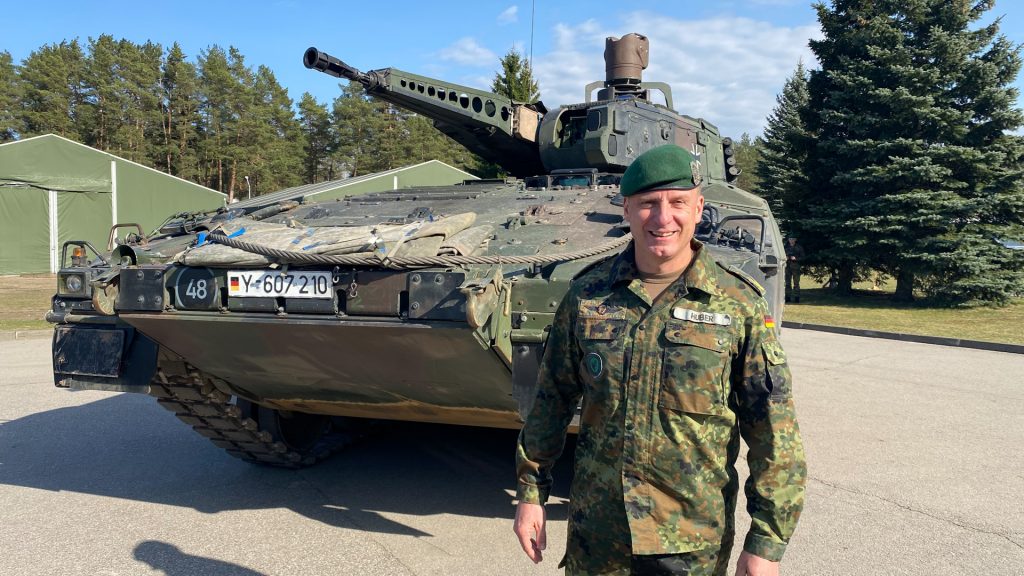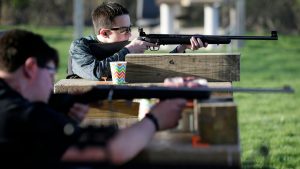Germany activates 5,000 troops on NATO’s eastern flank
Ella Greene April 1, 2025 0
- Germany activated its first permanent foreign military deployment since World War II, sending a 5,000-strong armored brigade to bolster NATO’s eastern flank. The deployment responds to Russia’s war in Ukraine and aims to help protect NATO territory.
- German forces will operate from temporary facilities until they move into a permanent base in 2027.
- The move fulfills a 2023 pledge to reinforce NATO’s eastern flank in response to Russia’s war in Ukraine.
Full Story
Germany activated its first permanent foreign military deployment since World War II, stationing a 5,000-strong armored brigade in Lithuania. The brigade will reach full operational strength by 2027. The move marks a major shift in Berlin’s defense posture and fulfills a 2023 pledge to reinforce NATO’s eastern flank in response to Russia’s war in Ukraine.
The newly formed 45th Armored Brigade is now under Brig. Gen. Christoph Huber, who said the mission is to protect NATO territory and ensure the security of Germany’s Lithuanian allies. Until construction finishes on a permanent base in Rūdninkai by 2027, German troops will operate from temporary facilities.
How does this affect NATO’s strategy?
The deployment includes combat troops and medical, signal and command support teams stationed across Lithuania. German troop levels will rise from 150 to 500 by the end of 2025.
Lithuania borders Russia’s Kaliningrad exclave and Belarus. Officials there describe the German presence as critical to national defense. For NATO, the deployment supports its shift to deterrence through forward defense — positioning forces closer to potential flashpoints.
What role does this play in Germany’s military goals?
German Defense Minister Boris Pistorius told lawmakers the Bundeswehr may expand its uniformed personnel target to 230,000, up from the current goal of roughly 203,000. The armed forces currently have around 180,000 personnel and have struggled with recruitment for years.
The increase would help Germany meet NATO’s 2025 capability targets. Alliance planners estimate NATO will need 35 to 50 new brigades to deter a Russian attack. Under that scenario, Germany says it will field 3 to 5 additional brigades — roughly 20,000 to 30,000 combat troops.
What are the political and financial stakes?
Germany ramped up defense spending under Chancellor Olaf Scholz after Russia’s 2022 invasion of Ukraine, meeting NATO’s 2% benchmark for the first time in decades. But sustaining that level has proven difficult.
A recent budget dispute caused Scholz’s three-party coalition to collapse, prompting a snap election in February. Despite those challenges, the German deployment in Lithuania signals a turning point for Berlin’s postwar military identity and a reaffirmed commitment to NATO collective defense.
Ella Rae Greene, Editor In Chief
Ella Greene
Ella and the staff at Clear Media Project (CMP) curate these articles.
Unless otherwise noted CMP does not write these articles.
The views, thoughts, and opinions expressed in the articles published on this blog belong solely to the original authors and do not necessarily reflect the views of the blog owner. The blog owner does not claim ownership of the content shared by contributors and is not responsible for any inaccuracies, errors, or omissions.
All rights and credits goes to its rightful owners. No Copyright Infringement is intended. If you believe any content infringes on your rights, please contact us for review and potential removal.





